Most developing and developed countries prefer renewable electricity like solar power, wind power. This preference is due to increased demand and value of electricity.
Nowadays, electricity is seen as an important part of economic development and the main advantage of renewable energy sources is environmentally friendly. The electricity from renewable energy resource will create less impact on the atmosphere.
Electricity from renewable resources has the ability to replace non-renewable resources.
The sun's energy can be easily converted into solar power or electrical energy using PV modules.
If you want to learn how solar cells work? You can directly swipe down
What is the difference between Solar Energy and Solar power?
Solar energy: The word "Solar" means "sun" and solar energy means "Sun's energy." The sun emits heat, light, and other electromagnetic waves to the earth every day.
Solar power: Conversion of solar energy into electrical energy. The word "solar" means sun and power mean electricity.
Solar Cells Vs Solar Panels
Solar cells convert the photon energy (light energy) in the sun into electrical energy. A single solar cell has the capacity to generate 0.5 volts of electricity. This is less when compared to the demand.
When sunlight strikes solar cells, they generate direct current (DC).
The solar panel is a rectangular section in which a combination of several solar cells is connected serially to generate voltage.
What is the Photovoltaic effect in solar panels?
The photovoltaic effect refers to the process of converting photons (light energy) in the sun into electrical energy.
What is a Solar farm or a Solar power plant?
To generate a large amount of electricity, power companies must build solar farms over a large area. As a result, a solar farm is a collection of photovoltaic systems that generate electricity in the same location. The solar farm contains a large number of solar panels.
In detail, a large solar farm may consist of several hundred individual PV modules spread across a large area. The area required to generate the desired amount of power will vary depending on the location and efficiency of the Photovoltaic module. Solar farms are also known as Photovoltaic power stations, solar parks, or solar power plants.
Solar power plant-definition
Types of solar power plants
Solar power plants are classified into three types based on their purpose: on-grid systems, off-grid systems, and hybrid systems.
On-Grid Solar power plant
There is no energy storage system for storing electrical energy in this type of solar power plant. Excess or unused power is delivered to the utility grid.
In order to deliver unused power to the utility grid, this type of solar power plant must be connected to the grid.
The on-grid solar power plant consists of a Solar panel, Inverter, and Instrument devices (Energy meter). The solar panel delivers DC output to the inverter for the conversion process.
The inverter converts DC electricity into AC electricity and sends the power to the loads and utilization grid. The excess or unused power is sent to the utility grid.
Off-Grid Solar Power Plant
This type of solar power plant includes an energy storage system that stores electricity in a solar battery bank. A utility grid connection is not required for this type of solar power plant.
During the night, the system's battery backup operates at full capacity. So this type of solar power plant is called an independent off-grid solar power plant
Hybrid solar power plant
A hybrid solar power plant is a combination of both On-Grid solar systems and Off-Grid solar systems.
Hybrid solar power plant = on-grid solar power plant + off-grid solar power plant
What are solar panels Made of?
To begin answering this question, we must first examine the construction of solar cells, because the construction of solar panels clearly answers this question.
Construction of Solar cell
We have already seen that solar panels are made up of small units of solar cells. The most common type of solar cell is made of silicon elements (Si), a semiconductor that is the second most abundant element on Earth after oxygen. Silicon is widely regarded as the most intelligent element on the planet.
A crystalline semiconductor silicon element is sandwiched between conductive layers in solar cells. Each silicon atom is connected to its neighbors by four strong bonds which makes the electrons immovable. So no current flow will be there.
Doping Method- Extrinsic semiconductor
A doped semiconductor is called an extrinsic semiconductor.
The method of adding impurities to the semiconductor is called extrinsic semiconductor.
In this method, silicon semiconductor is mixed with Phosphorous (Valence electron 5) and Boron (Valence electron 3). After adding impurities to the Silicon element, electrons will move freely from one place to another.
Because of this doping method, silicon element is comprised of three different layers,
- N-type layer
- P-type layer
- P-N junction layer
N-Type Semiconductor layer (High concentration of Electrons)
The top N-layer is highly doped and very thin.
P-Type Semiconductor layer (High concentration of Holes)
The bottom layer in the image is called the P-type layer. A semiconductor with more holes is called a P-type layer. This layer contains a more positive charge. This layer is in contact with the aluminum plate.
P-N Junction layer
Depletion Layer.
While joining these two layers, the electrons in the N-type layer try to reach the P-Type region creating the negatively charged layer. Similarly, holes of the P-Type region try to reach the N-Type region creating the positively charged layer. The region between these two-layer is called the depletion region.
The depletion region across the P-N junction layer behaves like a neutral atom because it has the ability to generate electron and hole pairs because of photons.
Solar cells working principle
The wavelength of sunlight photons is 350-1140 nm. As a result, it can easily penetrate the top N-type layer and reach the depletion region.
Photons are elementary particles that are emitted by the sun and travel through space with it. When sunlight hits the top layer of the silicon solar cells only photons are absorbed into the middle layer of the solar cell. The middle layer of the solar cell nothing but the depletion region.
Due to the deficiency of charge in the depletion region, it contains neutral atoms. These neutral atoms are broken when the photons of the sunlight strike the depletion region.
The Striking of photons generates enormous pair of electrons in the depletion region. The electric field in the depletion region drives the electrons and holes in their respective place. Now the electrons move towards the N-type layer and the holes move towards the P-type layer.
The high concentration of electrons in the N region and hole in the P region become so high that a potential difference will be developed between them. As soon as connecting any loads between these regions electrons will start flowing towards the load through the electrical circuit,
After energizing the load the electrons will recombine with the holes in the P region and the process will continue 1000 times in a fraction of a second.
Solar cells convert solar heat and light into electricity in this manner.

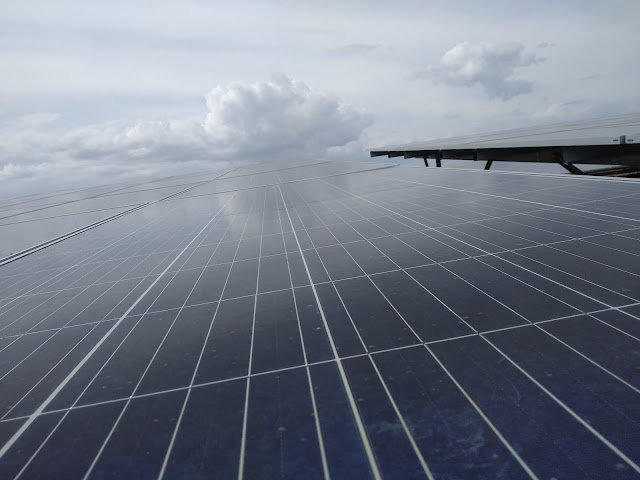

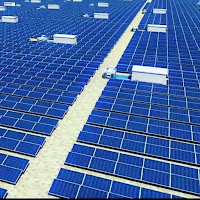
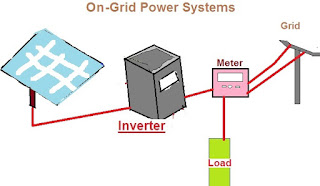
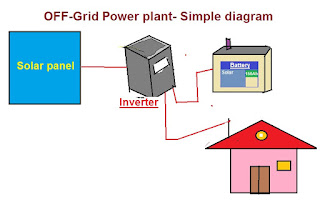
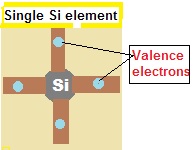
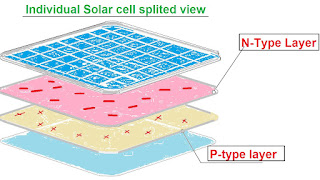


Thanks for sharing this information. This Content is Very informative for me.
ReplyDeleteSolar Arizona
Solar Las Vegas
The Solar Power is considered as the new energy for us and it is green power for the environment. We should encourage more people using it in the life.
ReplyDeleteSolar Arizona
Solar Las Vegas
The Solar Power is considered as the new energy for us and it is green power for the environment. We should encourage more people using it in the life.
ReplyDeleteSolar Arizona
Solar Las Vegas
Thank you for sharing valuable information. I enjoyed reading this post. keep sharing more blogs.
ReplyDeleteSolar Arizona
Solar Las Vegas
Natura Eco Energy is the largest Robotic Solar Panel Cleaning System. We deploy excellent technology to design, install and commission benchmark solar projects. Natura Eco Energy are provides installation for all our customers that require captive rooftop solar power plants at their data centers, factories, offices, hotels, hospitals, educational institutions and residences. We also provide Services like Solar EPC Plant, Grid Connected Solar Rooftop System, Solar Power & Renewable Energy, Ground Mount Solar System Installation Services, Renewable Energy Plant etc.
ReplyDeleteThanks For Sharing If you want to promote your business through Digital Marketing please contact Lebynd best company in Tamil Nadu
ReplyDelete